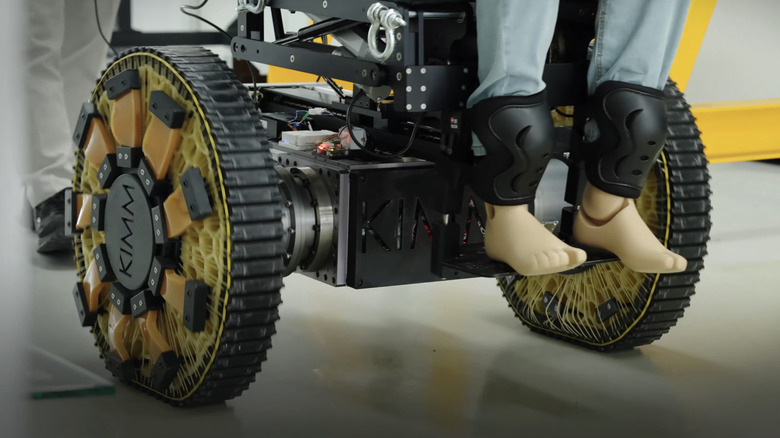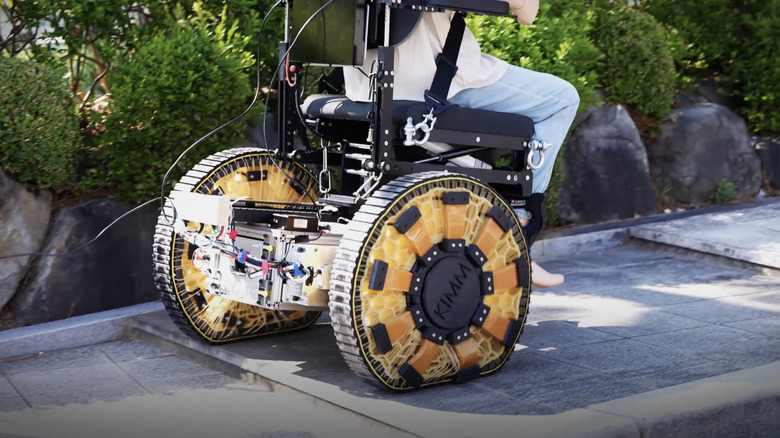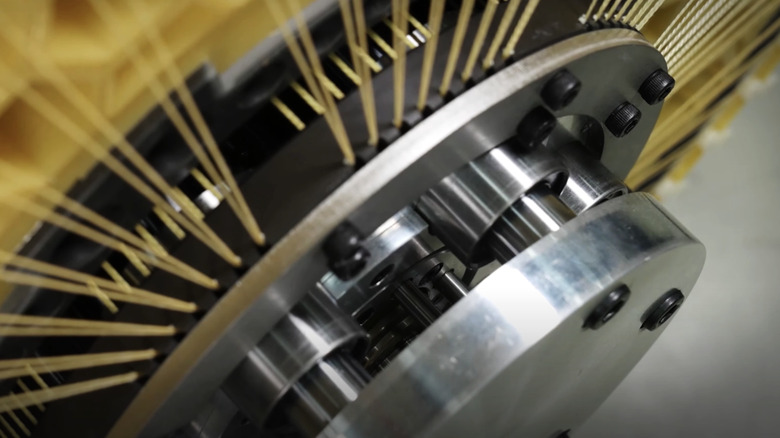The South Korean Technology That's Reinventing The Wheel
For a long time, tech has felt as if it's stuck in a plateau. Our smartphones barely change with each new iteration, and virtual and augmented reality, touted as major additions to the world of consumer tech around 2015, have thus far failed to make much of an impact — even after Apple introduced its lamentably dystopian-looking Apple Vision in 2024 (virtual reality does at least remain crucial to doctors and surgeons).
But recently things feel as if they might be shifting in a more significant way. Perhaps it's the proliferation of generative AI, which is spreading at a rapid pace when just a few years ago artificial intelligence seemed to belong to a far-off future. On a much less widespread scale, but no less startling, U.S. military scientists are said to be working on mind-controlled weapons, while companies such as Tesla are on the verge of providing consumers with humanoid robot companions capable of carrying out household tasks.
All of which feels like a new age of technology is about to dawn, and now, a South Korean company is literally reinventing the wheel. Researchers have now developed a wheel which is capable of conforming to new terrain, allowing vehicles to traverse previously impossible obstacles. It's even been demonstrated in action, with this latest invention proving its worth in the real world and even demonstrating how it can climb steps. The new technology could have wide-ranging benefits, with the team behind the invention touting its potential use in everything from delivery vehicles to robots used on the battlefield.
The wheel that morphs as you move
You might wonder how a wheel could be any better at its job than it already is, but imagine a wheel that can morph to adapt to different terrain. That's exactly what researchers at the Korea Institute of Machinery and Materials (KIMM) have managed to develop: a wheel that can switch between solid and more fluid-like states in order to better tackle certain obstacles.
The new wheel design is inspired by the surface tension of water droplets and is capable of rolling over obstacles as much as 1.3 times the height of its radius. It works by adapting the stiffness of spoke wires, which run through the hub of the wheel and attach to an outer chain that looks like a small tank track. When the onboard sensor detects a certain obstacle, it sends a signal to adjust the stiffness of the spokes and allow the wheel to conform to whatever it's trying to roll over.
According to Science Robotics, in August 2024, the KIMM team laid out their design for a "variable-stiffness morphing wheel" in more detail, elaborating on their inspiration for the design. Explaining the way in which liquid droplets maintain their shape, the researchers wrote, "As the cohesive force of the outermost liquid molecules increases, the net force pulling the liquid molecules inward also increases." The high surface tension that results ensures the liquid droplet always returns to a spherical shape — a feature emulated by the morphing wheel.
The morphing wheel will have multiple real-world uses
The KIMM team's novel take on the wheel may not be as glamorous as humanoid helper robots or AI companions, but its real-world applications could prove truly significant in the near future. The KIMM research team envisions their new wheel design being used in wheelchairs, allowing users to better navigate all manner of terrain. To that end, the group demonstrated their design in a four-wheeled vehicle and a two-wheeled wheelchair. The prototype wheelchair was able to use the morphing wheels to climb a set of stairs with 18-centimeter steps, all while supporting a life-sized dummy.
But beyond wheelchairs, there are multiple uses for such an invention. The team behind the new design envisions unmanned delivery vehicles and even robots designed for use on the battlefield, all outfitted with morphing wheels. There are also multiple robots currently used in everyday life that could benefit from the morphing wheel, such as robotic vacuum cleaners. Principal researcher Song Sung-hyuk told Reuters that the ultimate goal is for the wheels to be able to handle speeds of up to 62 mph.


